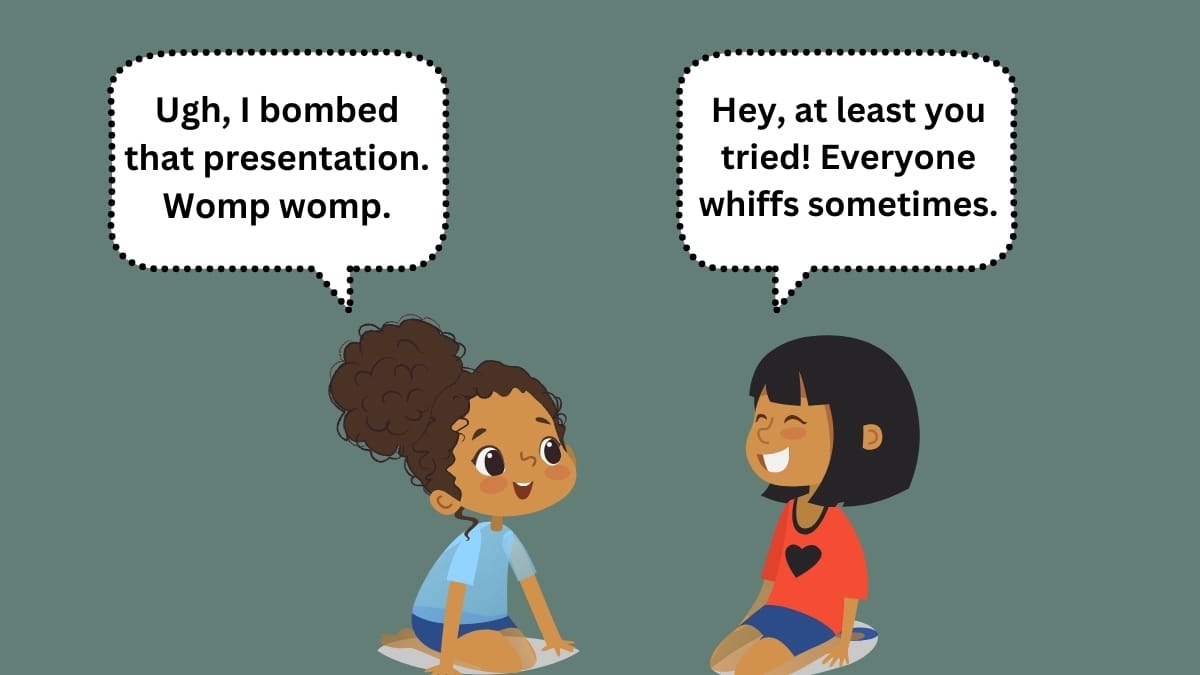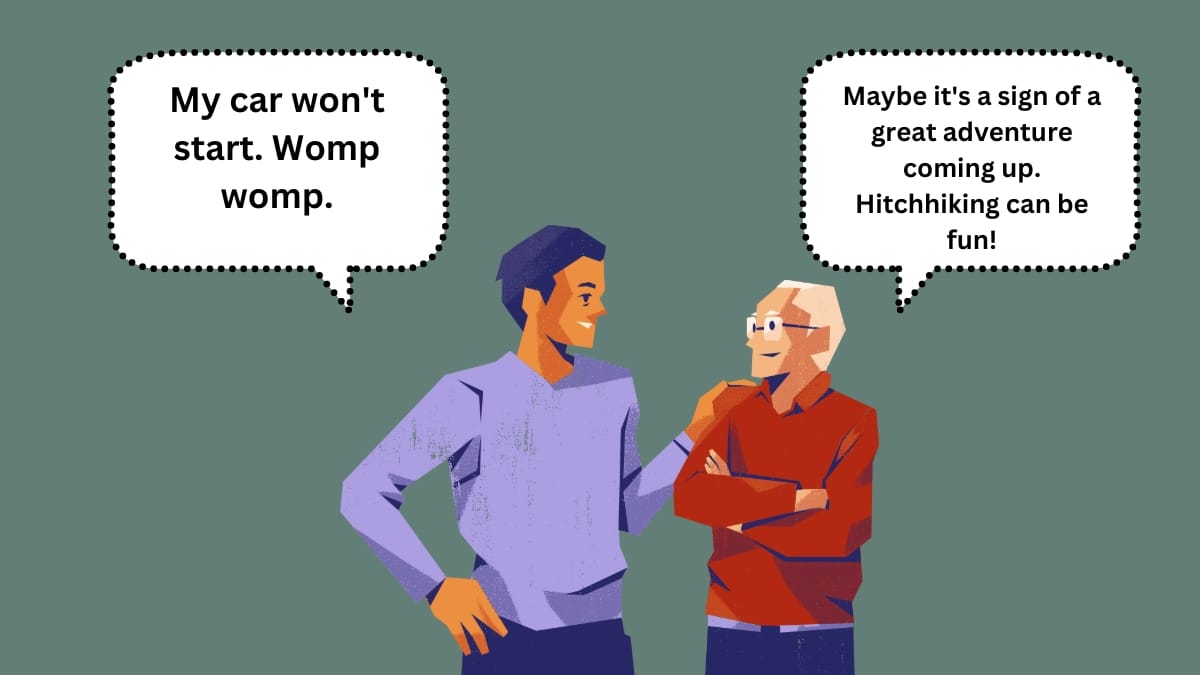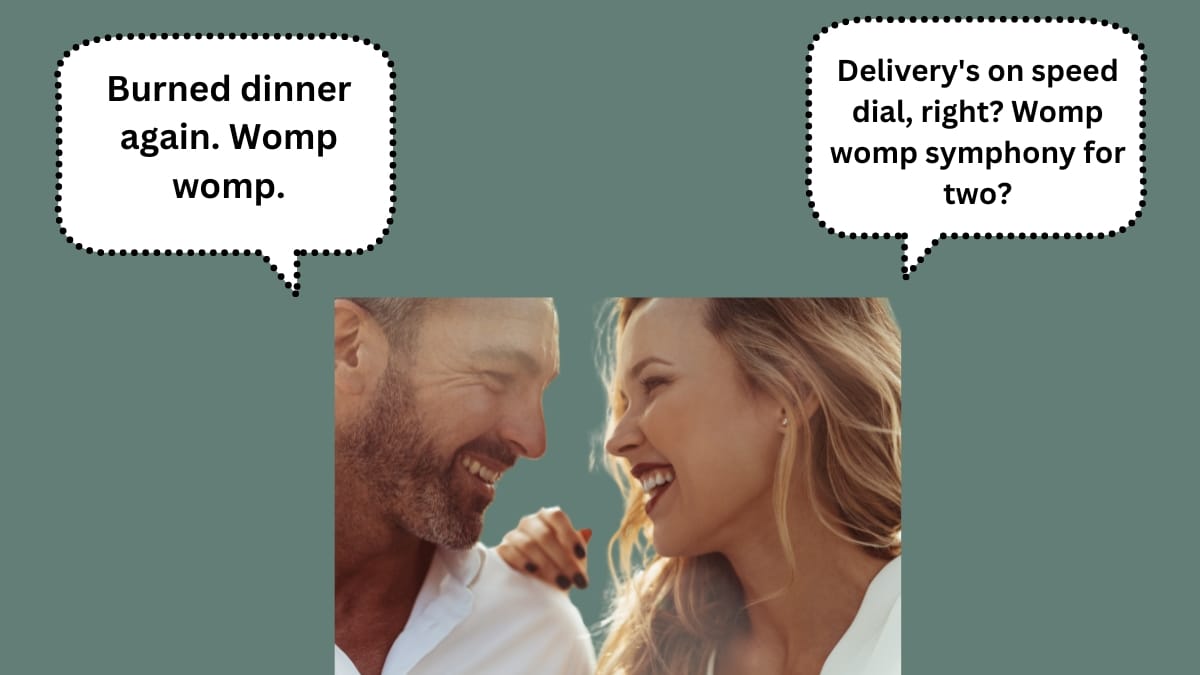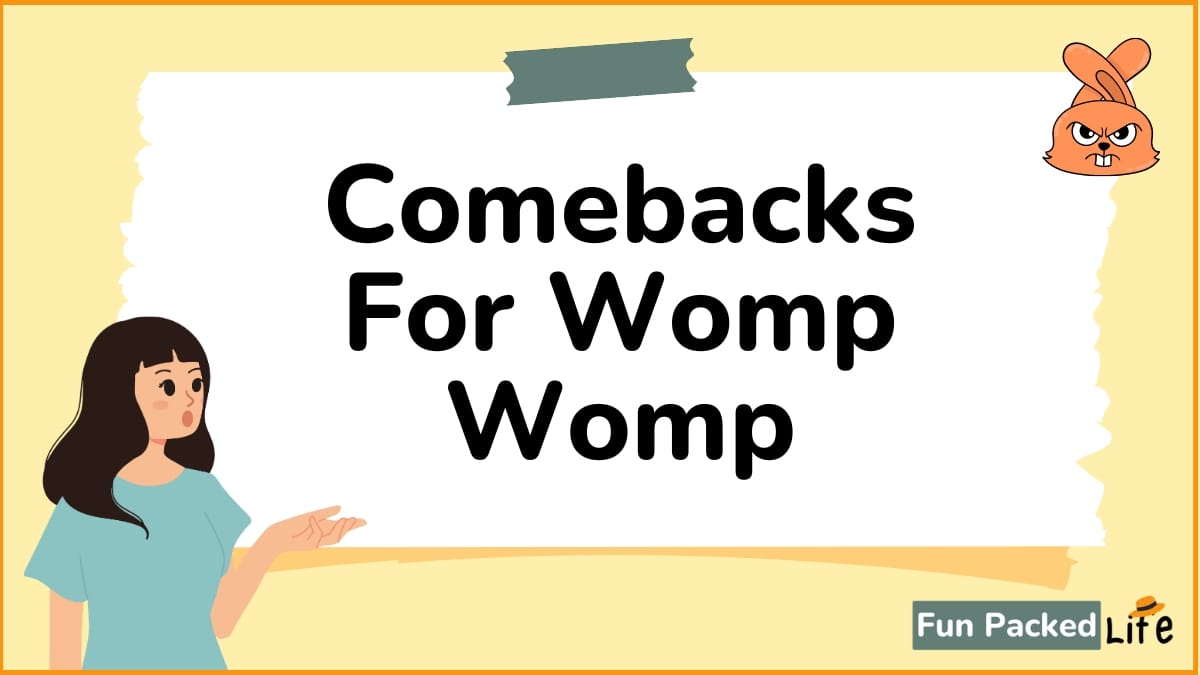Encountering a dismissive “womp womp” can momentarily catch you off guard. But with the right comebacks for womp womp at your disposal, you can swiftly turn the tables.
Let’s get you prepped to respond with confidence and creativity whenever “womp womp” comes your way.
“Still the star of my own show, even if you’re hitting pause.”
This comeback shines with confidence and wit, perfectly suited for flipping a dismissive “womp womp” into a moment of self-affirmation. It’s designed to not only brush off the negativity but also to assert your continued success and protagonism, no matter the audience’s reaction.
50 Comebacks For Womp Womp

This comeback serves as a bold declaration of transforming dismissal into a platform for showcasing one’s prowess.
With an undertone of challenge, this retort emphasizes readiness to rebound from any low point.
This response cleverly turns the diminishing “womp womp” into a mere backdrop for one’s triumphant actions.
Mixing a bit of sarcasm with confidence, it signifies that one is unphased and prepared to impress once more.
It uses the energy of skepticism as a catalyst for personal growth and comeback.
This line promises a victorious return that will outshine the initial dismissal.
Reframing the comment as a signal, this comeback emphasizes the start of a resurgence.
This one hints at motivation derived from being underestimated, leading to a gratifying prove of prowess.
By labeling the dismissive sound as a heroic anthem, it turns a negative into a powerful starter for action.
This assertive comeback warns the detractor to prepare for an unexpected and impressive turnaround.
10 Good Comebacks For Womp Womp
15 Short Comebacks For Womp Womp

10 Funny Comebacks For Womp Womp

5 Dirty Comebacks For Womp Womp
How did Womp Womp start?
The phrase “womp womp,” synonymous with the sound effect of a sad trombone, has woven its way into modern vernacular, primarily used to indicate failure or to sarcastically express sympathy.
This unique expression has roots deeply embedded in comedic traditions and has evolved to become a popular retort in both humorous and dismissive contexts.
Historical Context and Evolution
The actual sound, often written as “wah-wah” or “womp womp,” traces back to early 20th-century comedy routines where brass instruments like trombones were used to create humorous, often melancholic effects to punctuate comedic timing or mishaps.
The sound was a staple in silent films, where visual comedy was enhanced by expressive, mood-setting music.
Popularization in Media
The phrase gained mainstream traction through its frequent use in television and radio. One notable example is its use in cartoons and sitcoms from the mid-1900s, where the sad trombone sound became a standard audio cue for comedic failure.
It served as an auditory symbol of defeat or disappointment, enhancing the comedic element of scenes by juxtaposing high expectations with underwhelming results.
Modern Usage and Cultural Impact
In contemporary culture, “womp womp” has transcended its origins, becoming a part of internet meme culture and social media, where it is used to mock or play down failures, both trivial and significant.
The phrase’s ability to succinctly convey empathy ironically or genuine comedic relief makes it versatile and enduring.
SEO Perspective and Relevance
From an SEO perspective, the phrase “womp womp” holds significant search interest due to its widespread use and recognition in various media forms.
Content creators discussing popular culture, historical language evolution, or the psychology behind humor and sarcasm can leverage this phrase to attract readers and engage a broader audience interested in linguistic phenomena.
Why is womp womp so popular?
“Womp womp” has gained popularity due to its unique ability to succinctly and humorously convey empathy or sarcasm in response to minor failures or disappointments.
Originally used in comedic settings like cartoons and sitcoms where the sound of a sad trombone emphasized a humorous flop, it has since become a versatile expression.
The phrase’s appeal lies in its capacity to instantly communicate a shared understanding of setbacks, making it a common choice for expressing playful sympathy or mocking in conversations and social media.
Its simplicity and the emotional resonance it evokes contribute to its widespread use in various forms of communication.


